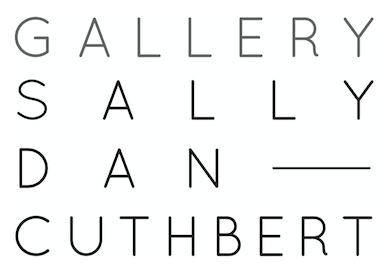Sally Smart (1960) is one of Australia's significant contemporary artists with a practice that engages identity politics: ideas relating to the body; the home and history. Smart is recognised internationally for producing stunning, large-scale cut-out assemblage installations made from felt, canvas, silk-screened and everyday fabrics that she constructs with pins. Smart is a process-oriented artist, often presenting narratives that characteristically subvert gender hierarchies through deconstruction and reconstruction of historical events and political associations with the traditional activities of women. Her work identifies with the art practices of Cubism, Dada, and Surrealism, and reflects a long engagement with avant-garde modernist women artists such as Sonia Delaunay, Hannah Hoch, Lyubov Popova, and Sophie Taeuber, all exponents of work with performance, collage and textiles and a lineage of practice she shares.
Smart exhibits regularly throughout the world and in 2016 had three international exhibitions: The highly successful two person exhibition with Entang Wiharso Conversation: Endless Acts in Human History at the Galeri Nasional of Indonesia in Jakarta; her fourth solo exhibition The Choreography of Cutting with Postmasters Gallery in New York and the immersive The Exquisite Pirate installation commissioned by the Singapore Art Museum for their 20th anniversary exhibition Odyssey: Navigating Nameless Seas.
Smart's work The Choreography of Cutting is a project re-framing the early 20th Century's avant-garde dance company the Ballets Russes, and their performative multi-disciplinary practice in experimental visual art forms, and their representation of the East intersecting with contemporary thought, evident in their choreography, costume and theatre design. Smart's recent assemblages and embroideries, created from digitally cutting up images of Ballets Russes costumes designed by visual artists of early modernism (Henri Matisse, Sonia Delaunay, Natalia Goncharova and Mikael Larionov). Smart's new work includes commissioning texts and puppet plays; cross cultural choreography and performance, with Javanese dance movement and re-interpretations of traditional Wayang Kulit. A century later, Smart sees contemporary parallels and is interested in issues of cross cultural influence and reciprocity, critically engaging her art practice to better understand the world.
Smart exhibited with Indonesian artist, Entang Wiharso in their two-person exhibition Conversation: Endless Acts in Human History at the Galeri Nasional Indonesia, in Jakarta (2016). This unique collaboration between two artists focused on Smart and Wiharso's work individually and in dialogue, and recognised the extraordinary synergies and cross cultural dialogues in their artistic practices. Conversation: Endless Acts in Human History engaged with dialogue and diplomacy as interconnected systems that are socially and culturally produced; therefore embedded in individuals, institutions and states.
Smart's commissioned work for the Singapore Art Museum (SAM) Odyssey: Navigating Nameless Seas was developed from her renowned series The Exquisite Pirate, 2005-2016, which has evolved as an idea through numerous iterations globally, and offers the woman pirate as a metaphor for contemporary global issues of personal and social identity, cultural instability, immigration and hybridity. An important recent work of Australian contemporary art, The Exquisite Pirate reflects on the symbolism of the ship and its relevance to postcolonial discourse and its implications to contemporary and historical Australia.
Smart's collage installations are applied directly to the gallery wall, working with a range of media including painted canvas and felt cut-outs, photographic elements, and printed fabric. The pins and joins that connect her work remain exposed to the viewer, emphasising the performative process Smart undergoes in the cutting, drawing, assembly and installation of her work. These complex collage installations with inventive methodologies and dynamic processes of moving and pinning, creating a dialogue that has contributed to expanding the boundaries of contemporary painting.
Smart's art practice reveals a longstanding engagement with theoretical debates about gender and identity within her additional theme of cutting, stitching, and rearranging. Exploring ideas relating to the body as a primary site of gendered experience and identity, Smart is situated within the wider context of artists today focused on the body as a metaphor for subconscious desires, anxieties, hopes and fears. Smart's references to traditional women's work methodologies of making, establish a layering of meaning, moreover, in which the organic and the domestic converge often with strange and surprising results.
Smart's work in The Choreography of Cutting differs from other manifestations of collage in twenty and twenty-first century art precisely because of movement. Her installations show a choreographic interest in dynamic space and group composition that emerges from her study of Rudolf Laban's geometries and Martha Graham's methods of dramatic assemblage, as well as her response to the disturbing qualities of a Pina Bausch scene. It is however through rhythm and the intensification of the corporeal in trace-forms, that Smart's cutting becomes a gestural performance derived from action. The convergence between movement, gesture and modernity has a significant historical lineage in both art and social life that is pertinent to a better understanding of Smart's collages.
- Rachel Fensham, 2015, Melbourne, Australia

